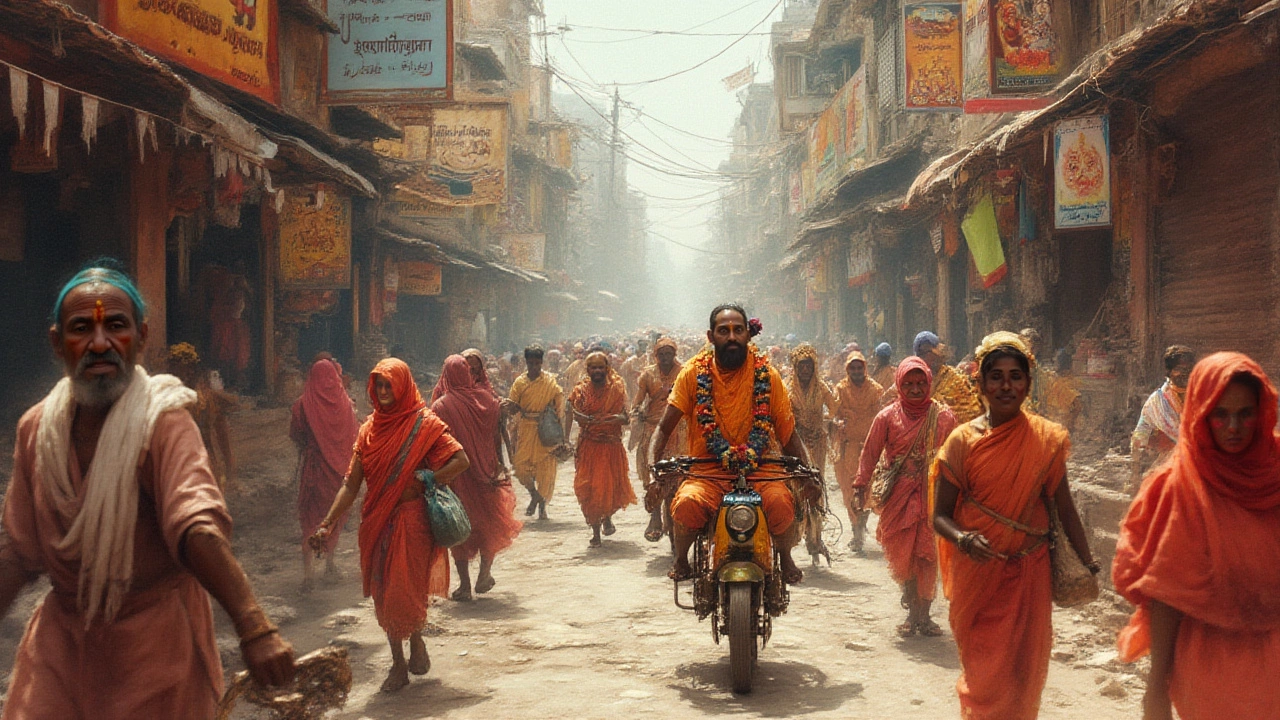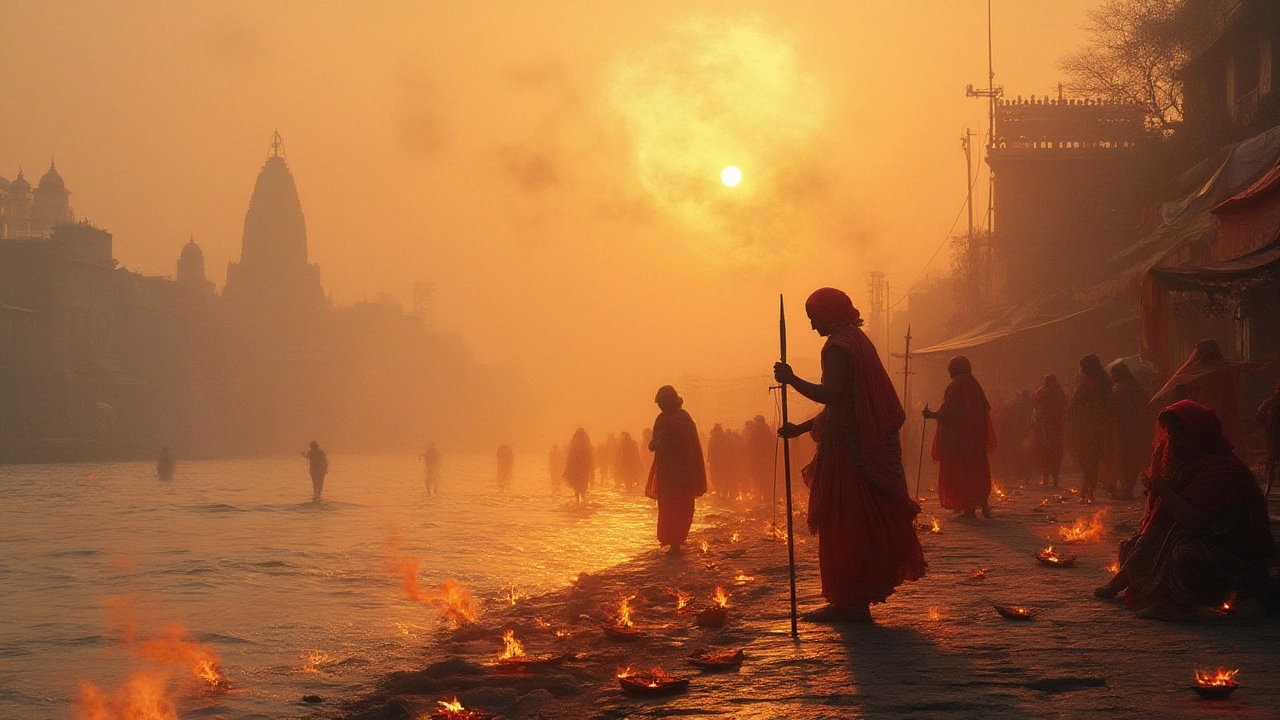Picture this: the air is thick with incense, chants echo from ancient temples, and the Ganges river glows orange under the morning sun. There’s this buzz that makes your skin tingle as locals, monks, cows, and camera-wielding tourists shuffle through the maze-like alleys. Walk along the ghats – those broad steps leading to the water – and you’ll meet travelers from Germany digging into street chaat, photographers from Japan trading stories with Sadhus, and digital nomads in yoga pants who swear they only came to Varanasi for “a couple days.” But something happens here. People find themselves unable to leave. What is it about Varanasi that hooks foreigners and pulls them headlong into its swirling chaos? Forget what you know about standard travel: this city plays by its own rules and doesn’t care if you’re ready.
The Magnetic Pull: Spirituality and the Ganges
Let’s not dance around it: spirituality sits at the core of Varanasi’s global lure. For Hinduism, this city, known as Kashi, is the beating heart. The Ganges River is believed to wash away sins; to bathe here is to reset your soul. There are centuries-old stories of seekers—both Indian and foreign—coming to this river, hoping to understand life, death, and whatever sprawls in-between. The morning aarti (ritual) on the ghats isn’t just a show for tourists; it’s a tapestry woven by generations, and foreign visitors find themselves swept up in it, cameras forgotten.
What’s wild is how Varanasi makes you question your own sense of time. Foreigners come, hoping for answers, and leave wrestling with bigger questions. Many are drawn to rituals like cremations at Manikarnika Ghat, something almost unthinkable in their home countries. In places like Prague or Sydney, talking about death is hush-hush. Here, it’s right there in the open, part of the cycle, something to witness, not fear. There’s a raw honesty in this approach. I once met a Norwegian backpacker who told me watching an evening cremation made him less terrified of dying himself—which blew my mind. You’d be surprised how many travelers end up meditating on a rooftop afterward, chewing over what they’ve seen.
You might think you’re immune to spiritual stuff—but Varanasi unravels even the most determined skeptic. One evening, my dog Rufus (who’s a seasoned traveler himself) stumbled across a group of Italians singing bhajans, each one claiming they’d arrived only for the “spectacle” but admitted they now felt part of something bigger. The city doesn’t preach; it simply surrounds you until you let go, breathe in, and maybe even join a sunrise yoga session. As far as travel experiences go, Varanasi doesn’t offer escape; it offers immersion.
Culture Shock and the Sensory Avalanche
Culture shock? That’s putting it mildly. Varanasi dials up the volume on everything you’ve known about India. Stray dogs stalk through markets, cows doze between motorcycles, and the alleyways are painted with more color than a Holi festival. Foreigners love Varanasi because it refuses to be tamed or predictable. It’s chaos, but a kind of beautiful choreography once you find the rhythm.
The food alone is worth the trip. Sample tangy tamatar chaat or sip hot masala chai from a clay cup while watching life swirl around you. I met a group of friends from Barcelona who’d mapped out Varanasi’s street food scene like a treasure hunt—turns out, lassi in this city really does taste better. It isn’t only about the flavors; it’s about the stories that spill out over each cup, as locals and travelers swap advice, warnings (don’t drink from the river!), and tales of “Varanasi belly.”
Art and music run through the alleyways. Stop by an impromptu sitar concert or a painting class overlooking the river. Many visitors come to learn tabla or classical dance, their days quickly claimed by lessons and their evenings by rooftop jam sessions. There’s a feeling of creative electricity, almost like Varanasi is challenging you to find your voice—or at least pick up a paintbrush.
Sure, the city isn’t all quaint charm. Traffic is wild, the noise takes getting used to, and yes, the sacred cows may try to eat your snacks if you’re not careful. But in this sensory overload, foreign travelers find something real: a place where no filter is needed. You see life (and death) bare and bold, and it changes how you look at yourself. A friend from Canada told me Varanasi gave him “permission to be confused,” and if that doesn’t sum up the experience, I don’t know what does.

Ancient Traditions Meet Modern Life
Foreigners get hooked on Varanasi because it’s one of the oldest, continuously inhabited cities on earth. This isn’t some museum piece, though—this place is alive. Walk twenty steps and you’ll brush past silk weavers crafting sarees like their ancestors did a millennium ago; the next minute you’re in a Wi-Fi café chatting about cryptocurrency with students from three continents.
What blows many people away is that, here, old traditions aren’t relics—they’re lived every single day. Step into the Kashi Vishwanath Temple, and you’ll see ritual, belief, and devotion pulsing through the crowds. During festivals, the city swells with energy. Foreigners are often welcomed into processions, swept into candle-lit ceremonies, or invited to family celebrations by strangers met that morning. Instead of standing on the sidelines, travelers find themselves pulled right into the core.
If you’re a history buff or someone who loves a good legend, Varanasi is a goldmine. The ghats aren’t just riverbanks but pages of living history, each with its own story. You’ll find British writers who showed up just to write a chapter and ended up chronicling an entire life here. Major international documentaries—like the BBC’s “Sacred Wonders”—have covered these ancient rituals, shining a spotlight on how this city bridges the old and new.
But it’s not all incense and stone. Young locals blog about art, politics, and relationships over Instagram reels. Even classic chai shops have started accepting UPI payments. It’s this mashup—timeless tradition side-by-side with millennial hustle—that makes foreign visitors stay longer than planned. People come for the temples, but they stick around because the city keeps surprising them with every step.
Travel Tips and Hidden Gems for Visitors
Thinking about making your own pilgrimage to Varanasi? Here’s what foreign travelers always wish they knew sooner. First, the best time to visit is between October and March. The weather is cooler, and you’ll catch big festivals like Dev Deepawali, when the ghats are lit with thousands of lamps—it feels like stepping into a dream.
Getting around can be intense if you’re not prepared. Tuk-tuks are the way to go, but don’t expect meter rates; you’ll have to bargain. Walking the old city is a must, though: put on comfy shoes and let yourself get lost (Google Maps isn’t always your friend in these ancient labyrinths). Take a boat ride at dawn and catch the morning rituals on the Ganges—it’s unreal how the city wakes up. Bring headphones if you’re noise-sensitive; trust me, even Rufus prefers morning walks when it’s quieter.
- Varanasi tourism is booming, and it’s easy to find tiny guesthouses run by local families that give you the best insider tips and chai. Skip the chain hotels if you can.
- Don’t rush the main temples, but also check out quieter spots like Assi Ghat, where students gather for open-air concerts and poetry slams.
- If you want an honest souvenir, look for handwoven silk stoles straight from the weavers (just ask for a quick loom tour—a lot of families welcome visitors).
- Go beyond the usual ‘sightseeing’. Take a music lesson, volunteer at a school, or join an evening philosophy debate that sometimes crops up in riverside cafés.
- Stay patient with the sensory overload. Locals are proud of their city, so if you get lost, don’t hesitate to ask. They’ll usually walk you right to your destination.
Also, street food is a revelation, but be choosy—always go where you see a healthy crowd. Drink only bottled water. And don’t feed the monkeys, no matter how cute.
By the time they leave, I’ve seen even the most stoic travelers fall for Varanasi, promising to return. There’s something addictive about its mix of devotion, noise, color, and wild hospitality. You might come chasing the city’s spiritual secrets, but you’ll stick around for the stories you collect (and maybe, like Rufus, the irresistible scent of simmering samosas wafting down every ghat).
